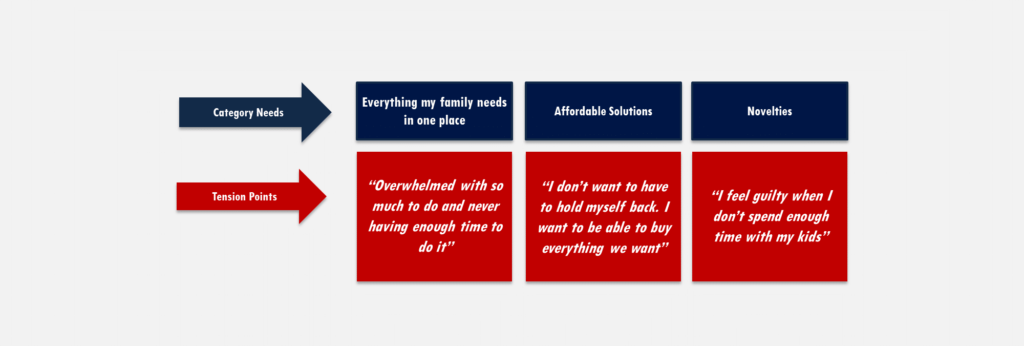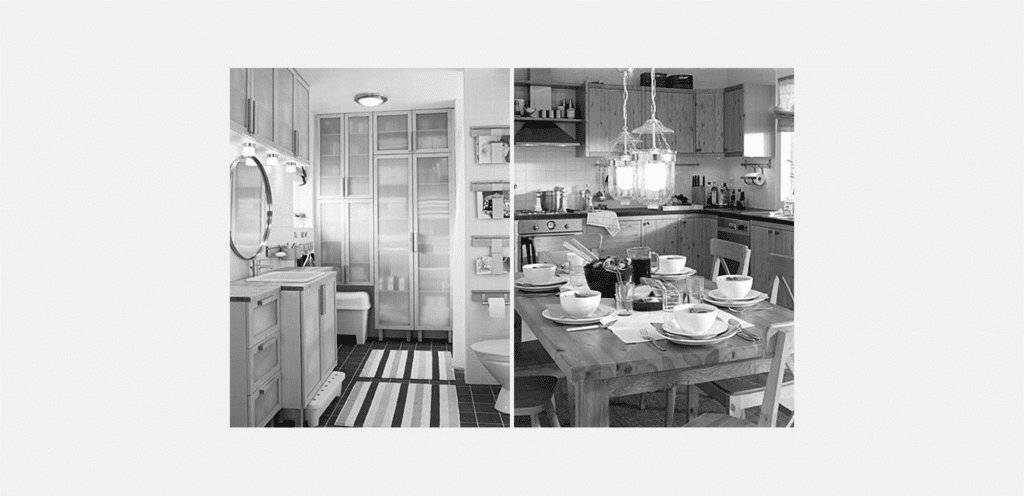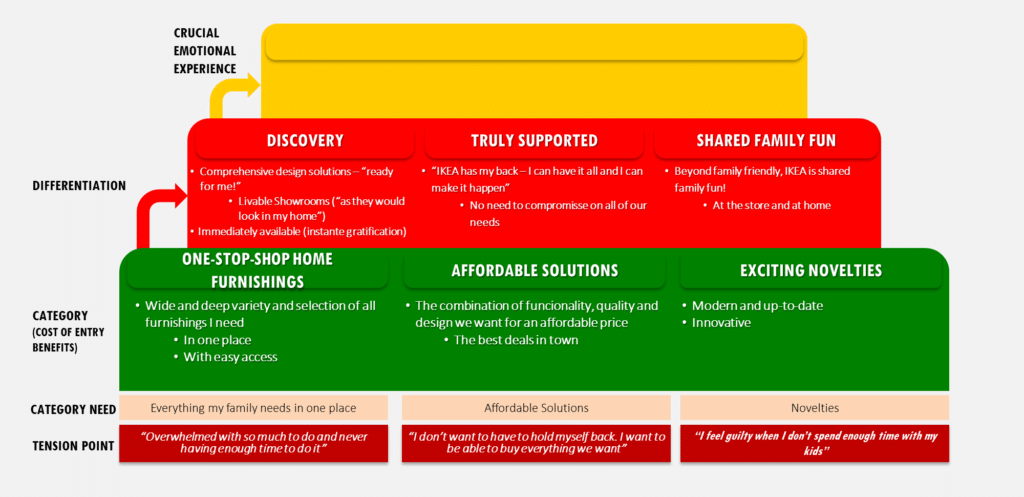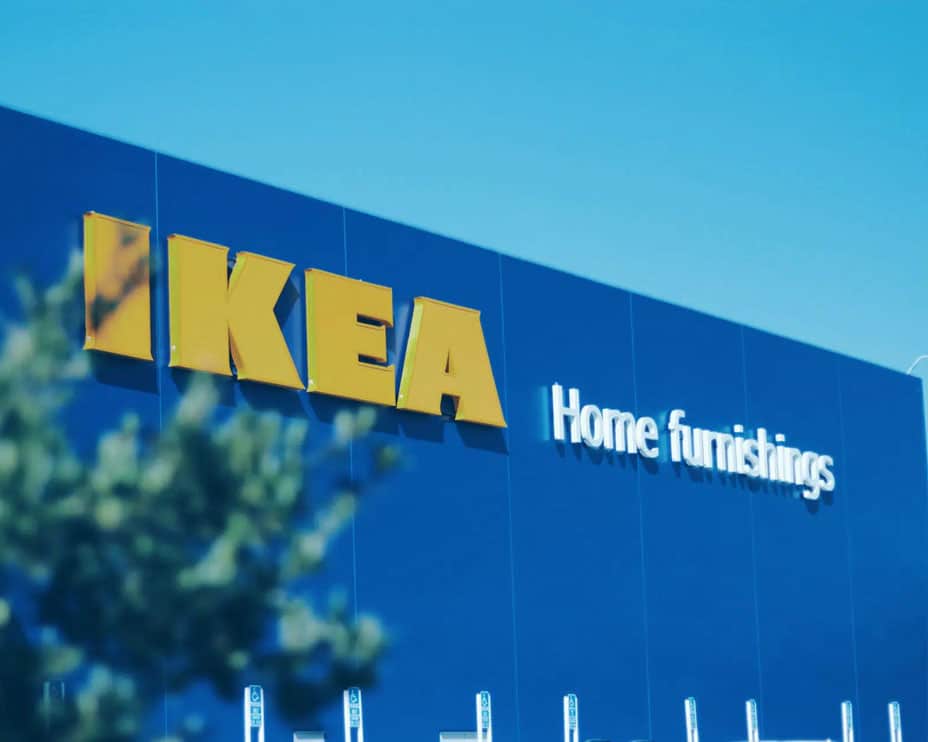Founded in 1943 in Sweden, IKEA is the retail brand that simultaneously provides a wide range of well-designed, functional, and affordable home furnishing products, while providing an activity-based shopping experience to families worldwide.
IKEA opened its first Eastern European store in Budapest in 1990 as it entered the Hungarian market – among the first Non-Food international retailers to open in the country. IKEA’s goal was to be the number one home furnishing brand in the world – likewise in Hungary. Following the necessary period to get a foothold in the Hungarian market, IKEA had strengthened its position and was ready to expand with a second store in the Budapest suburb Budaörs in 1999.
IKEA’s path to success in Hungary was chartered through the strong emphasis the company put on customer and brand research. From lifestyle trends to customer in-store flow analysis, the research aimed at uncovering key opportunities and any potential barriers that could stand in IKEA’s path toward market leadership.
A crucial research finding for the development of IKEA’s strategy in the Hungarian market was the surprisingly wide range of benefits that the brand could deliver to its customers. The problem was that the brand had become so broad and inclusive with so many features and benefits that it was very difficult to establish which benefit was most important to whom.
Therefore, the challenge for IKEA-Hungary’s Marketing Director was centered on how to prioritize a large number of functional and emotional benefits – namely to separate and define those drivers that would deliver long-term preference.
IKEA moved beyond a traditional brand positioning and instead delivered a crucial customer experience through its brand architecture. It was the attainment of this higher level of customer satisfaction that has driven IKEA to market leadership in Hungary.
IKEA Brand Architecture
IKEA’s overall target came off a segmentation based on life stage, personal values and lifestyle, and interest in the home.
This case focuses on how IKEA built its brand architecture using the customer motivational hierarchy model targeting one particular psychographic segment of its overall target whose self-fulfillment is directly related to their family’s happiness. They are very passionate about different areas of their life, but the most important thing for them is to spend quality time with their kids and husband while fostering an environment where kids can have fun and express themselves freely, and where the adults don’t totally lose sight of their needs and desires both individually and as a couple. They’re the ultimate decision-makers on matters relating to the home, but they’re also very influenced by their kids, and typically give in to their requests.
IKEA had a wide range of primarily positive perceptions that could deliver on a range of both emotional and rational needs. Therefore, it required a multi-dimensional approach to prioritize those key benefits. Since a positioning statement by itself offered only a one-dimensional point of difference, IKEA powered up its customer strategy by building a brand architecture that delivered on a crucial emotional experience – the critical asset that would drive long-term growth and market leadership.

Figure 1. Category needs and tension points
Category Needs and Tension Points
Both Category Needs and Lifestyle Tension Points are critical in developing a powerful brand architecture. Figure 95 shows us the three Category Needs that are the most meaningful for the targeted customer segment and reflect their expectations of the home-furnishing retail category. Behind those needs lie the three key lifestyle tension points, which are driven by their motivations, fears, and beliefs.
The IKEA Brand Architecture is a meaningful, deliverable, and defendable solution to fulfilling these needs and releasing the related tension.
Based on the analysis of key customer target insights, IKEA’s brand benefits were prioritized as follows:
IKEA Brand Architecture: Cost of Entry
IKEA likes to say: “the product range is our identity,” but in reality, it’s only a Cost of Entry requirement. IKEA’s product range provides the customer with the benefit of getting a wide range of well-designed, functional, and affordable home furnishing products. But could the customer get a similar benefit of product range if it went shopping at IKEA’s competitor?
Probably. The reality is that the customer does not initially perceive the variety IKEA offers in a way that would clearly differentiate IKEA from its competitor. A wide range of choices is what they expect from any of the alternatives they’d select for the category and is, by definition, merely a Cost of Entry requirement.
Additionally, the customer sees the entire category as delivering on good value for money, so the “affordability benefit” IKEA thought they owned also became required as Cost of Entry.
Lastly, keeping up with the latest design trends and creating a sense of vitality and novelty became a must-have in home-furnishing retail, and although IKEA does an outstanding job at this, it also doesn’t ensure a strong sustainable differentiation.
If it would limit its offer to “Cost of Entry” features and benefits, IKEA would basically be perceived as simply having a lot of modern home furnishing items to sell at a pretty good price. Not bad, but probably not enough to capture and sustain leadership against a growing group of competitors intent on copying IKEA’s designs with cheaper materials and/or bigger marketing budgets.

IKEA Brand Architecture: Differentiating benefits
Research showed that the customers perceive IKEA’s Swedishness as being a quality differentiating point over other alternative brands. As a result, it is considered to have a reliable human nature, clean modern design, and an environmentally friendly image. From the PR generated by traditional Swedish in-store events to the menu choices in its restaurant, or to the logo and outdoor-wall colors, this Swedishness is a point of difference, but unfortunately not quite enough on its own to power IKEA’s future success.
Discovery
On top of being a one-stop-shop, IKEA further offers a truly coordinated range between function and style. Every new product adds something to the existing products – the armchair goes with the bookcase that goes with the new extending table that also matches the armchair, and so on. Furthermore, by placing this benefit side-by-side with the convenient promise of immediate availability, IKEA achieves a fairly strong positive differentiation.
Moreover, IKEA allows the target customer to visualize how the comprehensive design solutions would look in their home by exhibiting them in the store’s real-size showrooms. These provide the year-round inspiration that enables the customers to discover, create and reinvent their homes they want for themselves and their families for every month or any season of the year.

With this ‘discovery’ benefit provided by the in-store livable showrooms, IKEA was able to distance itself from its competitors in the Hungarian market.
Truly Supported
The second differentiation pillar reflects the appreciative and caring attitude of the IKEA brand and makes the customer feel that they never have to compromise on what they want for themselves or their family. They feel appreciated and understood – that they can have it all.
Shared Family Fun
The third pillar of IKEA’s differentiation is delivering on the benefit of ‘Shared Family Fun’. They own family fun in this category. IKEA became a kids-centric and family shopping event: “being an enjoyable place for the whole family is the task of the IKEA store” from the top management until the fork driver, the entire IKEA team claims.

Together with the Cost of Entry requirements, these differentiating functional benefits enhanced IKEA’s value equation to the point that it raised one step above its competitors. These benefits are the foundation for the ultimate way IKEA wants customers to feel – the Crucial Experience.
Ikea Brand Architecture: Crucial emotional experience to drive preference
After careful study of its customer research and insights, IKEA found the ‘crucial benefit’ that it believed would drive long-term preference, to be what? – IKEA realized that following the target customer’s daily struggle of handling an over-filled professional and personal life and managing the home and family logistics, they simply wanted to feel confident they were being good mothers. And being a good mother was based on ensuring that they were providing a ‘happy home’ for their family.
Happy home experience
Understanding this key customer desire led IKEA to base its brand strategy on the core benefit of fulfilling family happiness and delivering on a crucial experience by providing the target’s family a happy home experience in-store and then immediately enabling them to bring it back to their homes.

By helping the target provide this complete, content, and fun home to their families, IKEA makes them feel confident they are being good mothers. The emphasis that the brand puts on children’s wellbeing and development is key to involving the target in the happy home experience. Role-playing in a puppet show, jumping into a berry bath, watching a Swedish tale, working with wood – these are just a few of the activities awaiting children in IKEA’s playground – Småland. This supervised facility gives kids the opportunity to play while their mothers can shop in a relaxing manner in any IKEA store in the world. Targeted customers can fully give in to IKEA’s innovative and inspiring shopping experience because they know that their kids are safe and happy playing with other children.
They can also pick them up any time they need their help in choosing furniture for their bedrooms. And to answer that perennial question of exactly which toy the child would like before purchasing, IKEA allows customers to see the result beforehand.
In addition to Småland, there is even a “play furniture” showroom for children under 5 years. This facility lets the parents take a rest during the visit and allows them to play with their younger children. These play areas make IKEA a place kids love to visit. When asked why they had visited the IKEA store that day, a significant number of customers said their child had asked to be taken to play at IKEA.
Experience for the fathers
On a different level, this family understanding applies also to the fathers. For example, IKEA’s restaurant offers the whole family a delicious and affordable meal and a relaxing time during the shopping. But this is of relevance for dads. Reading the newspaper, eating, and having a drink are activities that most “shopping impatient” husbands, partners can enjoy in IKEA’s restaurant. Again, as soon as their wives need their opinion on some items, they are close at a hand.
Meanwhile, dad can feel relaxed and content.
Livable showrooms
Having livable showrooms enables the target customers to visualize what their homes could become. Additionally, being able to experience and evaluate it with the whole family provides the happy home feeling that builds confidence that they are truly giving their family exactly what they want. Watching their kids freely jump on the beds in the bedroom settings, feeling the comfort of a sofa together with their husband while watching a movie in a living room setting, experimenting with the pans, plates, and silverware in a kitchen setting, these are some of the many happy home activities that the customers directly experience while shopping in an IKEA store.
Together with these permanent in-store activities, IKEA organizes temporary or seasonal events that further enhance the crucial home experience it has identified in its brand architecture.
Experiential In-Store Events
Every other week, IKEA involves the target with experiential in-store events that relate to what they could expect and do in their enhanced home – wine-tasting, fashion shows using IKEA fabrics, home aromatherapy workshops, among others. Thereby, customers can experience the IKEA kitchen while learning how to prepare delicious new dishes during the Culinary Week. Moms can also get the whole family to explore and discover their most comfortable sleeping experience during IKEA’s Bedding Weeks, when specialized personnel give advice on bed-making, healthy and relaxing sleeping positions, different mattress benefits, and, of course, customized bedroom decorations.
To further demonstrate and involve customers in the happy home experience while tapping into current entertainment trends, IKEA developed its own in-store reality show: Go Cubic. Typical customers, Melinda & Gabor, moved into a 25 sqm flat set inside the Budapest store and lived there for three weekends. The surprised visitors could literally sense the smell of the intriguing meals being prepared, or mingle in some of the everyday life rituals of this popular everyday couple, like watching TV or checking their email.
By allowing the whole family to touch, jump, relax, sleep, feel, smell, play, eat, and learn, IKEA encourages their customers to spend longer in the store. Furthermore, Mom’s feeling of having a complete and contented home that needs constant refreshment and continual attention is thereby satisfied. These experiences incorporated into IKEA’s communications, events, and promotions encourage the target to visit IKEA more often. By providing a happy home shopping experience to its customers, IKEA has managed to move beyond simple differentiation and has, in fact, risen two levels above its competition. As a result of its brand architecture, IKEA moved beyond the business of the HOME FURNISHING category to the much bigger business of being a HAPPY HOME ENABLER / PROVIDER.
Happy home Provider / Enabler
IKEA has consequently entered a more dynamic and profitable business. Rather than positioning relative to other HOME FURNISHING retailers, IKEA took control not only by positioning itself but also by positioning an entirely new category (HAPPY HOME PROVIDER / ENABLER) to its advantage.
by Ana Matos



